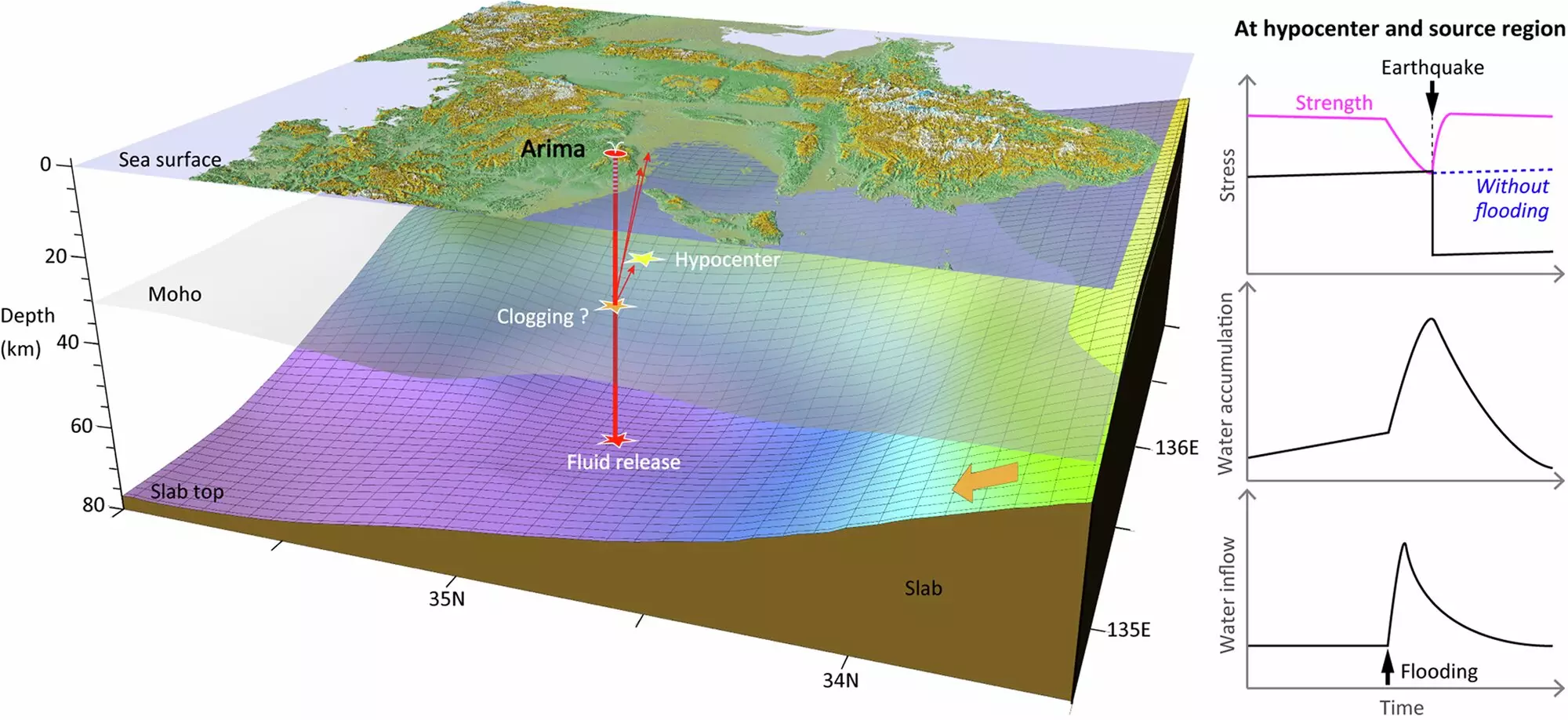The 1995 Kobe earthquake, also known as the Hyogo-ken Nanbu earthquake, stands as one of Japan’s most devastating seismic events, claiming thousands of lives and causing extensive infrastructure damage. Understanding the underlying causes of such significant tectonic activity is crucial not only for historical context but also for the development of future earthquake prediction strategies. Recent research from University of Tsukuba has suggested a potential, yet groundbreaking, connection between the deep underground dynamics of water sources, particularly in proximity to hot springs, and the occurrence of this disastrous event.
Located near Kobe, Arima Hot Springs has long been renowned for its therapeutic properties and distinctive saline waters. What makes this location particularly interesting to researchers is the unique isotopic composition of its water, which suggests a geological link to the subducting Philippine Sea Plate. These isotopes, crucial to understanding the water’s origins, reveal that the water is not merely meteorologically sourced but may indeed be influenced by deeper geological processes. The implication here is that hot springs could serve as natural indicators of subterranean changes that might precede seismic events.
The researchers employed isotopic analysis to examine the stable ratios of hydrogen and oxygen, alongside chloride ion concentrations, in the hot spring water over several decades. This approach provided a dual benefit: verifying the origins of the water while simultaneously mapping out variations in chemical compositions that correlate with earthquake activity. The findings indicated a notable fluctuation in the proportion of plate-derived water, with increases noted particularly in the years leading up to the Kobe earthquake.
One of the striking conclusions drawn from the research is the significant correlation between increased chloride ion concentrations in the hot spring water and the seismic activity in the region. Similar patterns were observed during historical events, such as the Matsushiro earthquake swarm in the 1960s, highlighting a consistent trend in which groundwater changes might foreshadow earthquake occurrences. The ability to discern these patterns raises the prospect of effectively using hot spring water monitoring as a tool for earthquake prediction.
The implications of these findings extend far beyond the realms of geological curiosity. If validated further, the relationship between hot springs and seismic activity could revolutionize the approach to earthquake prediction and preparedness strategies. By integrating hydrological monitoring with geological assessments, researchers could bolster the accuracy of predictive models, potentially saving lives and mitigating infrastructure damage. As Japan grapples with the lingering impacts of historical earthquakes, advancements that enhance predictive capabilities will be invaluable.
Ultimately, the investigation into the interplay between hot springs and seismic activity opens up new avenues in seismology and resource management. The study not only provides a captivating insight into the processes underpinning earthquakes but serves as a reminder of the intricate connections that exist beneath the Earth’s surface, waiting to be explored.


Leave a Reply